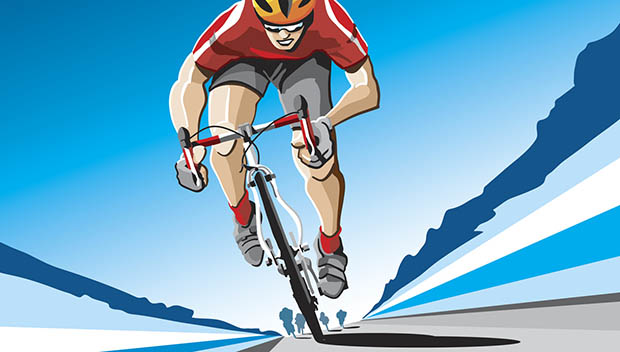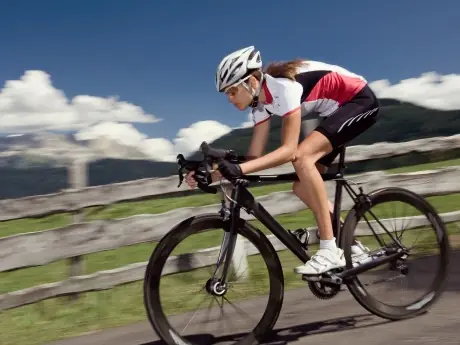
Without fail, almost every stage of this year's Tour de France will feature a breakaway—the almost inevitably-doomed group of riders who have the guts and leg strength to escape the peloton.
And it's this brave group that makes the first few hours of every stage both more than a relaxing ride through the French countryside and worthy of watching. Unless you're an avid fan of Andre Greipel, you instinctively root for these underdogs to cross the finish line before the big, bad peloton swallows them up. For 90 percent of the Tour's starters, this is their best (and only) opportunity to leave their mark on the Tour and steal a stage victory from the sprinters. But bolting from the peloton and creating and keeping space takes more than a whim of courage. Here's how the breakaway takes shape.
Breaking Away
Stage races don't start like a 100-meter dash; there's no gunshot followed by chaotic pedaling for position. Instead, there's a 10 km rolling start when riders get their legs and settle in. A wave of white flags mark the beginning of the race. Attacks begin almost immediately.
While attacks, chases and counterattacks dominate the first hour of racing, a small group of two to 10 riders will eventually create a gap. How do these lucky few manage to break away from the main group?
- When you begin your acceleration, never be in the lead. This allows whoever's trailing you to remain in your slipstream.
- If in the peloton, attack from about 20 wheels back.
- By the time you've hit the front of the peloton, you should already be traveling at a much faster clip than the rest.
- Commit to the attack, and continue this velocity like you're in a full-sprint finish, mindless of those around you.
- Often the best time to attack is directly after another attack has been chased back into the peloton. This is known as a counterattack.
Keeping the Gap
This cycle of attacks and counterattacks can last up to 50 km before a small group finally settles in with a 5-to-10-minute advantage.
Oddly, it's of interest to both the peloton and the breakaway to keep the gap at this range.
The peloton wants to keep the gap manageable for both the sake of the overall classification and those vying for a sprint finish. The race leader, whose team is likely leading the peloton, doesn't want the riders to eat too much time into his lead, and the sprinters want to be able to easily chase the breakaway down as they approach the finish.
Meanwhile, the breakaway doesn't want to get too far ahead for fear of a too-quick reaction from the peloton, while remaining far enough ahead to make the peloton work to catch them.
While a lot depends on wind and a stage's elevation gain, a rider must assume the peloton can make up between 30 seconds to one minute over a 10 km stretch. With the peloton having the advantage of an infinite amount of fresh legs, it's nearly impossible for the smaller breakaway to match the speed of the oncoming peloton.
It's important for the breakaway to work together as much as possible during this time. Remember the following to keep the breakaway free:
- Ride in a group as a rolling rotation, not a paceline.
- Take turns pacing the bunch.
- Judge the motives of the others in your group.
- A successful breakaway is ultimately a delicate balance between conserving energy while also preserving your place ahead of the peloton.
- If there's 20 km left and you have two minutes on the peloton, kick it into high gear and you just might make it to the finish without being caught.
Whether successful or not, breakaways are what keep cyclists—and viewers—on the edge of their seats (and saddles) for the majority of a stage race. While inevitable—and more often than not fruitless—they also give us all an underdog to root for.
 READ THIS NEXT: The 7 Coolest Bikes in Tour de France History
READ THIS NEXT: The 7 Coolest Bikes in Tour de France History









Discuss This Article